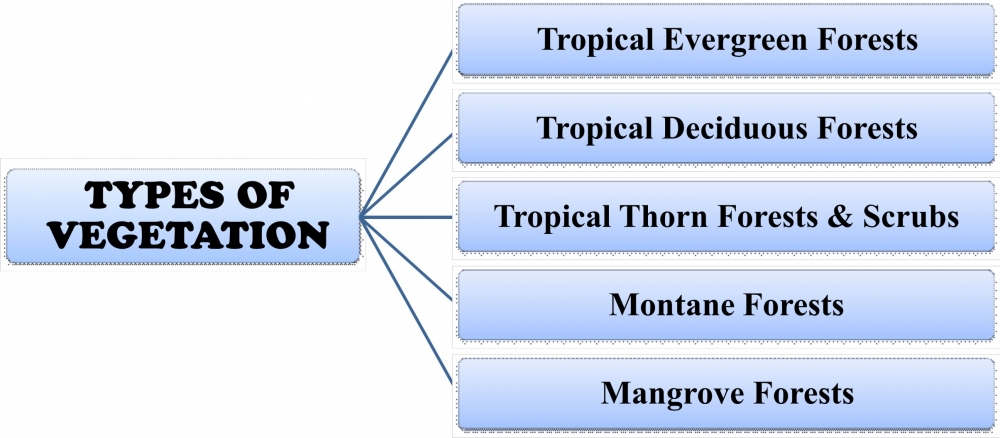
source
CLICK:-REGISTER & DISCUSS ETHICS CASE STUDIES & YOUR UPSC PREPARATION WITH CD MENTORS FOR FREE
What is natural vegetation?
It refers to a plant community which has grown naturally without human aid and has been left undisturbed by humans for a long time (also called as virgin vegetation).
- Cultivated crops and fruits, orchards form part of vegetation but not natural vegetation
- The virgin vegetation, which are purely Indian are known as endemic or indigenous species but those which have come from outside India are termed as exotic plants.
- The term flora is used to denote plants of a particular region or period. The species of animals are referred to as fauna.
Types of Natural Vegetation in India
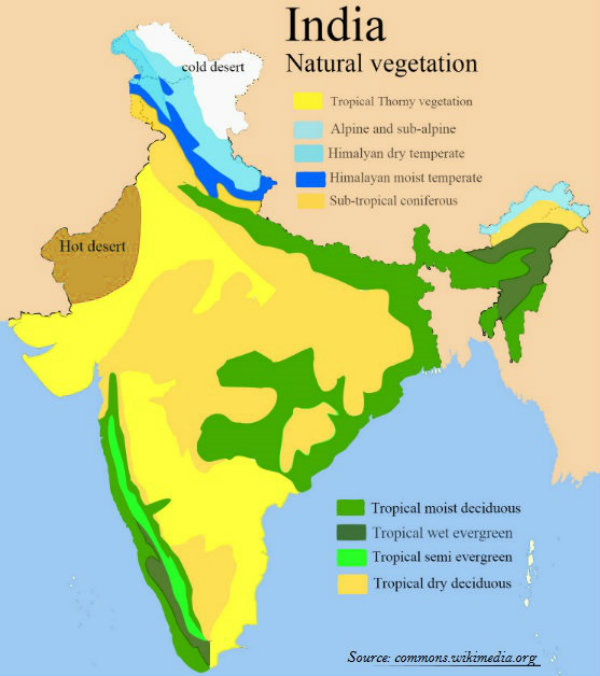
source
The following are the principal types of natural vegetation of India:
(1) Tropical Evergreen Rain Forests,
(2) Deciduous or Monsoon Type of Forests,
(3) Dry Deciduous Forests and Scrubs,
(4) Semi Desert and Desert Vegetation,
(5) Tidal or Mangrove Forests and
#1. Tropical Evergreen Forests
source
- The tropical evergreen forests usually occur in areas receiving more than 200 cm of rainfall and having a temperature of 15 to 30 degrees Celsius.
- They occupy about seven per cent of the earth’s land surface and harbours more than half of the world’s plants and animals.
- They are found mostly near the equator. Region is warm and wet throughout the year.
- Trees reach great heights up to 60 metres or even above.
- It has a luxuriant vegetation of all kinds – trees, shrubs, and creepers giving it a multilayered structure.
In India, evergreen forests are found in the western slopes of the Western Ghats in States such as Kerala and Karnataka. They are also found in hills of Jaintia and Khasi. Some of the trees found in Indian Tropical Forests are rosewood, mahogany and ebony. Bamboos and reeds are also common.
Common animals found in these forests are elephants, monkey, lemur and deer. The one horned rhinoceros are found in the jungles of Assam and West Bengal.
#2. Tropical Deciduous Forests:
- They are the most widespread forests of India.
- Also called the monsoon forests and spread over the region receiving rainfall between 200 cm and 70 cm.
- Trees of this forest type shed their leaves for about six to eight weeks in dry summer.
- On the basis of the availability of water, these forests are further divided into moist and dry deciduous.
Moist deciduous forests:

source
- It found in areas receiving rainfall between 200 and 100 cm.
- Exist mostly in the eastern part of the country – northeastern states, along the foothills of the Himalayas, Jharkhand, West Orissa and Chhattisgarh, and on the eastern slopes of the Western Ghats.
- Teak is the most dominant species of this forest.
- Bamboos, sal, shisham, sandalwood, khair , kusum, arjun, mulberry are other commercially important species.
Dry Deciduous Forests:

source
- The dry deciduous forests are found in areas having rainfall between 100 cm and 70cm.
- These forests are found in the rainier parts of the peninsular plateau and the plains of Bihar and Uttar Pradesh.
- There are open stretches in which Teak, Sal, Peepal, and Neem grow.
- A large part of this region has been cleared for cultivation and some parts are used for grazing.
- Common animals found are lion, tiger , pig, deer and elephant. Variety of birds, lizards, snakes, and tortoises are also found here.
Difference between Dry & Moist Deciduous Forests
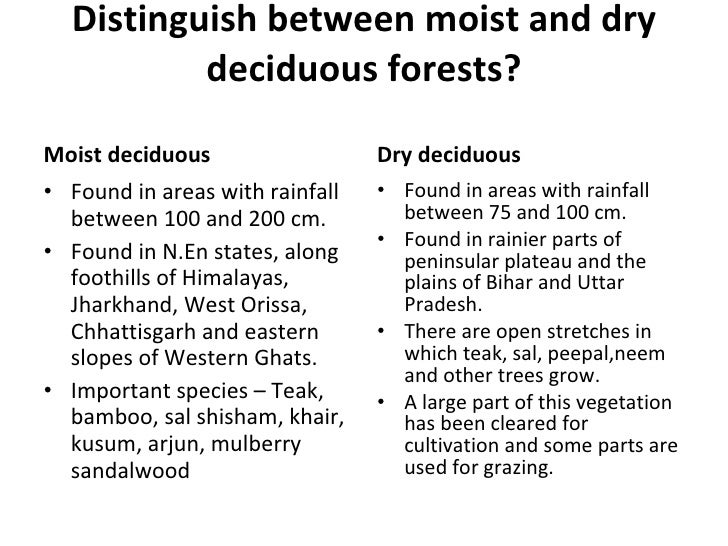
source
Difference between Evergreen and Deciduous Forests

source
#3. The Thorn Forests and Scrubs:
- In regions with less than 70 cm of rainfall, the natural vegetation consists of thorny trees and bushes.
- Found in the northwestern part of the country including semiarid areas of Gujarat, Rajasthan, Madhya Pradesh, Chhattisgarh, Uttar Pradesh and Haryana.
- Acacias, palms, euphorbias and cacti are the main plant species.
- Trees are scattered and have long roots penetrating deep into the soil in order to get moisture.
- The stems are succulent to conserve water.
- Leaves are mostly thick and small to minimize evaporation
source
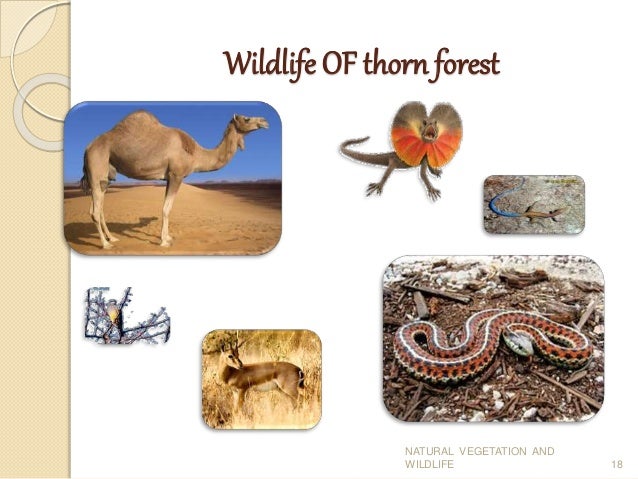
source
#4. Montane Forests:
- In mountainous areas, the decrease in temperature with increasing altitude leads to the corresponding change in natural vegetation.
- As such, there is a succession of natural vegetation belts in the same order as we see from the tropical to the tundra region.
- The wet temperate type of forests are found between a height of1000 and 2000 metres.
- Evergreen broadleaf trees such as oaks and chestnuts predominate.
- Between 1500 and 3000 metres, temperate forests containing coniferous trees like pine, deodar, silver fir, spruce and cedar, are found. and they cover mostly the southern slopes of the Himalayas, places having high altitude in southern and northeast India.
- At higher elevations, temperate grasslands are common.
- At high altitudes, generally more than 3,600 metres above sea level, temperate forests and grasslands give way to the Alpine vegetation.
- Silver fir, junipers, pines and birches are the common trees of these forests.
- They get progressively stunted as they approach the snowline and are used extensively for grazing by nomadic tribes like the Gujjars and the Bakarwals.
- At higher altitudes, mosses and lichens form part of tundra vegetation.
- Common animals found in these forests are Kashmir stag, spotted dear , wild sheep, jack rabbit, Tibetan antelope, yak, snow leopard, squirrels, Shaggy horn wild ibex, bear and rare red panda, sheep and goats with thick hair.

source

source
#5. Mangrove Forests:
- Found in the areas of coasts influenced by tides.
- Mud and silt get accumulated on such coasts.
- Dense mangroves are the common varieties with roots of the plants submerged under water.
- The deltas of the Ganga, the Mahanadi, the Krishna, the Godavari and the Kaveri are covered by such vegetation.
- In the Ganga Brahmaputra delta, sundari trees are found, which provide durable hard timber.
- Palm, coconut, keora, agar, also grow in some parts of the delta.
- Royal Bengal Tiger is the famous animal in these forests.
- Turtles, crocodiles, gharials and snakes are also found in these forests.
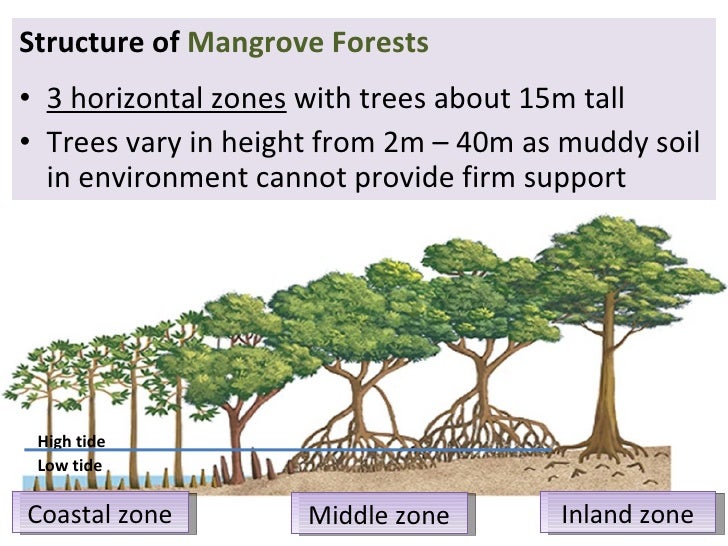


Thanks for giving Best out of best i m very impressed with ur work thanks to the team civil